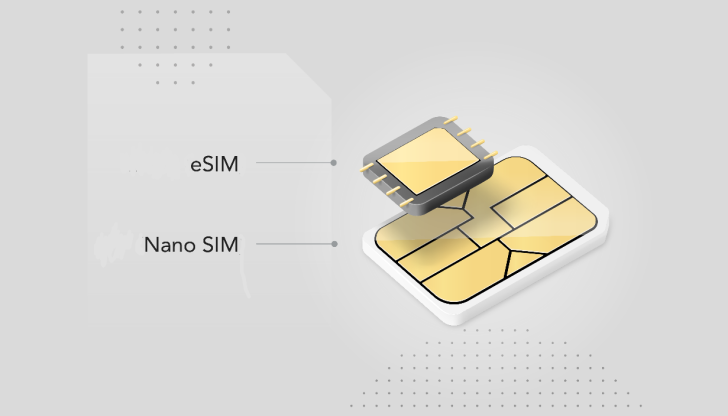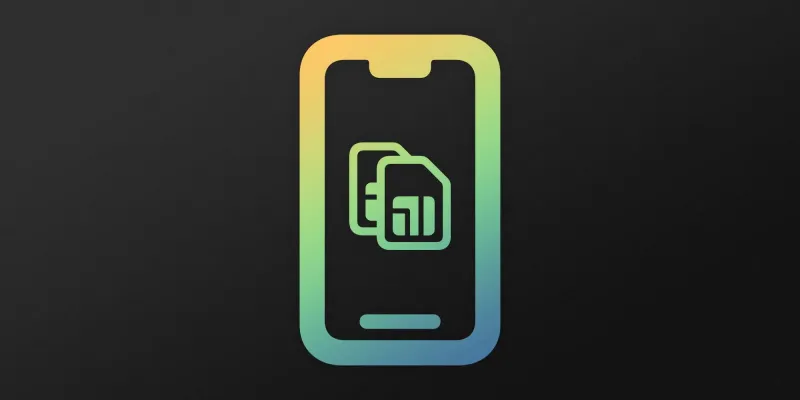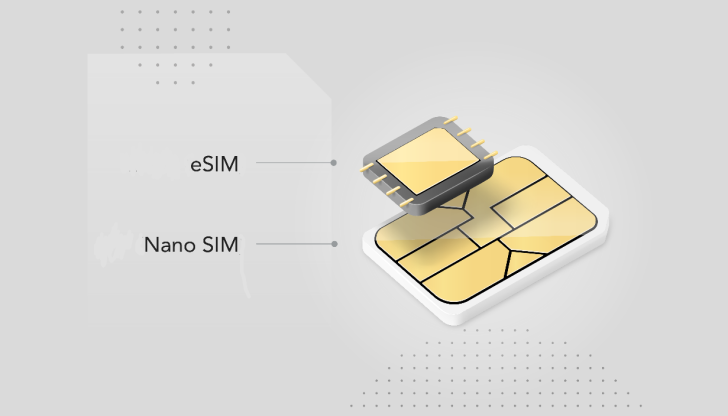what is eSIM : With the advent of technology, the way we communicate and connect with each other has undergone a massive transformation. One of the latest advancements in this domain is the eSIM, which is gradually gaining momentum in the world of telecommunications. In this blog, we will explore what eSIM is, how it works, and its advantages.
how eSIM works ?
An eSIM, or embedded SIM, is a digital SIM card that is embedded in a device, such as a smartphone, tablet, or wearable. Unlike traditional SIM cards, eSIMs do not require physical swapping or changing. Instead, they can be activated and configured remotely, making the process of switching carriers or plans much more convenient.
The eSIM technology is based on a new global standard defined by the GSMA (Global System for Mobile Communications Association). It allows the user to store multiple profiles on a single device, which can be easily switched between using a simple menu in the device settings.
The eSIM works by storing digital credentials, such as the SIM card number and the network provider’s information, in a secure chip embedded in the device. This allows the user to switch between different carriers and plans without the need for a physical SIM card swap. The process of activating an eSIM is also much simpler than traditional SIM cards, with users able to download a QR code from their carrier or scan one with their device camera to activate the eSIM.
Advantages to using an eSIM:-
There are several advantages to using an eSIM. Firstly, it allows users to have multiple numbers on a single device, making it ideal for people who travel frequently or have multiple business or personal phone numbers. Secondly, eSIMs eliminate the need for physical SIM cards, which can save users the hassle of carrying extra cards, losing them, or damaging them. Thirdly, eSIMs can be activated and configured remotely, making it easy to switch carriers or plans without the need for physical SIM swaps.
In conclusion, eSIM is a new technology that is transforming the way we use mobile devices. With its ability to store multiple profiles on a single device, remote activation and configuration, and ease of switching carriers and plans, it offers several advantages over traditional SIM cards. As eSIM technology continues to evolve, we can expect to see more devices and carriers adopt this new standard in the coming years.
In which devices eSIM can be used?
eSIM technology is designed to be used in a variety of devices, including smartphones, tablets, smartwatches, laptops, and other Internet of Things (IoT) devices. Here are some examples of devices that currently support eSIM technology:
Smartphones: Many newer models of smartphones, including the iPhone XS, XR, 11, 12, and the Google Pixel 3 and 4, support eSIM technology.
Tablets: Some tablets, such as the iPad Pro and the Microsoft Surface Pro X, also support eSIM technology.
Smartwatches: Many smartwatches, including the Apple Watch Series 3 and newer models, and the Samsung Galaxy Watch Active 2, support eSIM technology.
Laptops: Some newer laptops, such as the Microsoft Surface Pro X, also support eSIM technology.
IoT devices: eSIM technology is also being used in various IoT devices, such as smart home devices, connected cars, and industrial equipment.
As eSIM technology continues to evolve, we can expect to see it being used in even more types of devices in the future.
Benefits of eSIM
eSIM technology offers several benefits over traditional physical SIM cards. Here are some of the key benefits of eSIM technology:
Convenience: eSIM technology eliminates the need for physical SIM cards, making it more convenient for users to switch carriers or plans. It also allows users to have multiple phone numbers on a single device, which is useful for people who travel frequently or have multiple business or personal phone numbers.
Remote activation and configuration: eSIMs can be activated and configured remotely, making it easy for users to switch carriers or plans without the need for a physical SIM swap. This makes the process of switching carriers or plans much faster and more efficient.
Security: eSIMs are more secure than traditional SIM cards because they are built with a secure chip that stores digital credentials. This makes it harder for hackers to access the user’s information or steal their identity.
Better coverage: eSIM technology allows users to switch between multiple carriers, which can improve coverage and signal strength in areas where one carrier may have weaker coverage.
Environmentally friendly: eSIM technology is more environmentally friendly than physical SIM cards because it eliminates the need for plastic SIM cards, which can be lost or discarded. This can help to reduce waste and contribute to a more sustainable future.
Overall, eSIM technology offers several benefits over traditional physical SIM cards, including convenience, security, and better coverage. As more devices and carriers adopt eSIM technology, we can expect to see these benefits continue to grow in the coming years.


